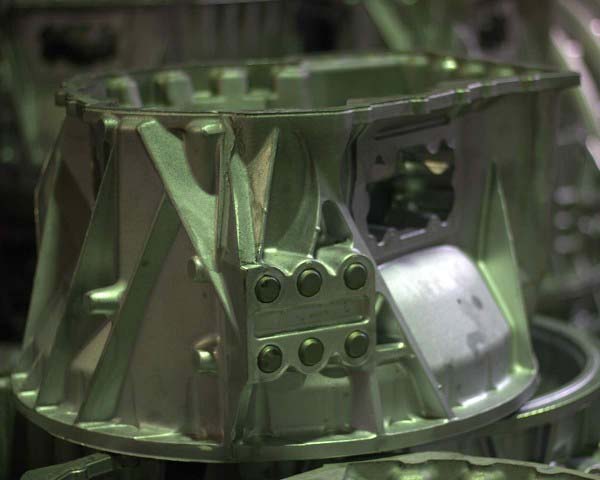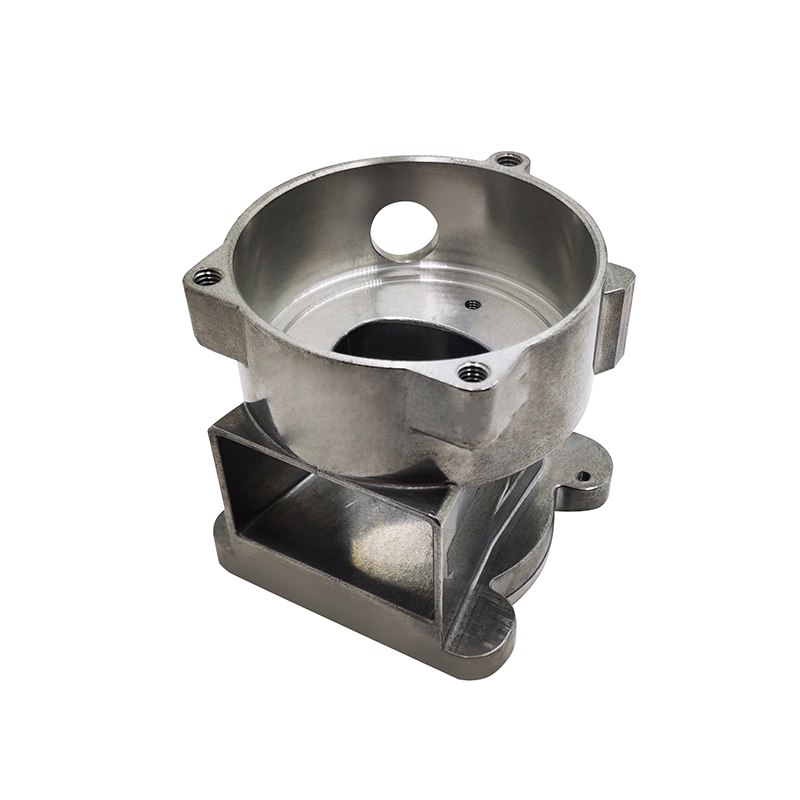Explore the benefits of industrial Precision aluminum casting for your next project
Discovering the Function of Aluminum Spreading in the Development of Industrial Manufacturing
Aluminum spreading has played a pivotal role fit modern industrial manufacturing. Its lightweight and long lasting nature has transformed the production of elements for different fields, including automobile and aerospace. With developments in casting methods, the sector has actually seen improvements in precision and effectiveness. As sustainability becomes increasingly essential, the recyclability of aluminum adds one more measurement to its relevance. What effects does this have for the future of making techniques?
The Beginnings of Aluminum Casting
Aluminum casting has a rich history that goes back to the late 19th century when the versatility of aluminum was first identified. This lightweight steel was deemed testing to function with due to its high melting point and susceptibility to oxidation. Cutting-edge minds began to explore its potential, leading to the advancement of different casting approaches. The intro of light weight aluminum into industrial applications noted a considerable transition in production, enabling the development of elaborate parts that were previously unattainable with other steels. By the very early 20th century, light weight aluminum spreading had actually gotten traction in various markets, from auto to aerospace, owing to its toughness and light-weight homes. The facility of foundries and the development of light weight aluminum alloys additionally thrust its popularity, establishing the stage for future improvements. Subsequently, the origins of aluminum spreading laid the foundation for its important role in modern industrial manufacturing.
Secret Innovations in Aluminum Casting Techniques
Current innovations in light weight aluminum casting methods have substantially changed commercial production. Developments in die casting processes have actually improved precision and performance, while the evolution of sand spreading has actually improved adaptability and cost-effectiveness. These developments are reshaping the landscape of light weight aluminum production and expanding its applications across different sectors.
Die Casting Innovations
As markets undertaking for improved efficiency and product quality, pass away casting has actually emerged as a centerpiece for innovation in aluminum spreading methods. Recent innovations have actually concentrated on enhancing mold and mildew design, temperature control, and material buildings, significantly decreasing cycle times and raising precision. The intro of computer-aided design (CAD) and simulation software program has made it possible for producers to enhance pass away geometries and predict prospective issues prior to production. In addition, the assimilation of automated systems has streamlined process, boosting uniformity and decreasing human error. Developments such as vacuum cleaner die spreading and semi-solid metal spreading have further improved the mechanical homes of light weight aluminum components, leading to lighter, stronger products. These advancements placement die casting as an essential component in the competitive landscape of modern production.
Sand Casting Advancement
Innovations in light weight aluminum casting strategies have not been restricted to die spreading; sand casting has actually likewise undertaken considerable evolution. Traditionally reliant on hands-on procedures, contemporary sand casting has embraced automation and electronic technologies, improving efficiency and accuracy. Innovations such as computer-aided layout (CAD) permit more intricate mold and mildew styles, while 3D printing of sand molds has transformed production times and reduced material waste. Additionally, the intro of sophisticated sand mixtures boosts the surface area finish and mechanical residential or commercial properties of actors parts. These advancements not just reduced production expenses however also expand the scope of applications for sand-cast light weight aluminum products. As markets demand greater quality and faster turn-around, the advancement of sand casting remains crucial in fulfilling these modern production challenges.
The Influence of Aluminum Casting on the Automotive Industry
Light weight aluminum spreading has changed the auto sector by allowing the production of light-weight elements that boost car efficiency. These improvements add greatly to enhanced fuel efficiency, straightening with ecological criteria and customer needs (aluminum casting). Additionally, the flexibility of aluminum spreading fosters style adaptability, enabling cutting-edge methods in car production
Lightweight Component Advantages
The auto sector has actually increasingly welcomed lightweight parts to improve gas effectiveness and performance. Aluminum spreading has become a key technology in this shift, permitting makers to produce parts that are not only lighter however likewise structurally robust. These light-weight parts contribute to improved automobile characteristics, making it possible for much better handling and acceleration. Additionally, aluminum's deterioration resistance prolongs the life-span of vehicle components, reducing upkeep expenses over time. The flexibility of light weight aluminum spreading enables for intricate styles that were previously unattainable, facilitating technology in car aesthetics and functionality. As vehicle suppliers remain to prioritize sustainability, the usage of lightweight light weight aluminum cast components straightens with initiatives to lower general car weight, marking a considerable Homepage development in automotive engineering.
Improved Fuel Effectiveness
As the vehicle market seeks cutting-edge methods to improve fuel efficiency, light weight aluminum casting has actually emerged as a pivotal solution. The light-weight homes of aluminum greatly lower vehicle weight, leading to improved fuel economic climate. By substituting larger products with light weight aluminum cast components, producers can enhance engine effectiveness and reduce energy usage. This change not just aids in reducing greenhouse gas emissions however also aligns with global sustainability objectives. Additionally, light weight aluminum's superb thermal conductivity permits better heat dissipation in engines, better improving efficiency and effectiveness. As an outcome, automobiles making use of light weight aluminum cast components can achieve higher miles per gallon, appealing to eco-conscious consumers and meeting strict regulative standards. This innovation highlights light weight aluminum's essential duty in the future of vehicle manufacturing.
Style Adaptability and Technology
While traditional materials commonly impose constraints on design, light weight aluminum spreading offers unmatched adaptability that cultivates technology in the automotive market. This flexibility enables makers to develop complicated geometries and detailed functions that were previously unattainable. Light-weight aluminum elements can be tailored to fulfill specific efficiency needs, improving both car effectiveness and appearances. In enhancement, the casting procedure sustains quick prototyping, enabling quicker iterations and reducing time-to-market for new styles. As car manufacturers increasingly focus on sustainability, light weight aluminum's recyclability matches layout campaigns, promoting environment-friendly techniques. On the whole, aluminum casting empowers developers and engineers to press the boundaries of creative thinking, resulting in the development of advanced vehicles that meet modern customer demands for performance, safety and security, and ecological responsibility.
Technologies in Aerospace With Light Weight Aluminum Casting
Light weight aluminum spreading has changed the aerospace market by enabling the manufacturing of lightweight yet very durable parts. This advancement enables for the development of complicated shapes that traditional production methods can not accomplish, resulting in enhanced performance and performance in aircraft layout. Key applications consist of engine parts, structural parts, and complex settings up that take advantage of aluminum's excellent strength-to-weight ratio.
Advancements in casting methods, such as high-pressure die casting and financial investment casting, have boosted dimensional accuracy and surface area finish, reducing the need for extensive machining - Precision aluminum casting. These innovations improve manufacturing processes, lower preparations, and lower manufacturing prices, making aluminum parts significantly interesting aerospace designers
Furthermore, the ability to integrate numerous functions right into a solitary actors component decreases setting up time and prospective factors of failure. Because of this, aluminum spreading remains to play a critical function ahead of time aerospace innovation, contributing to the development of safer, much more reliable, and eco-friendly airplane.
Sustainability and Ecological Advantages of Light Weight Aluminum Casting
The aerospace sector's shift towards aluminum spreading not only enhances efficiency however likewise contributes favorably to sustainability efforts within commercial production. Aluminum casting offers significant environmental benefits, largely as a result of aluminum's integral recyclability. Around 75% of light weight aluminum created is still in operation today, showcasing its possibility for circular economy practices. Furthermore, the power required to recycle light weight aluminum is considerably reduced-- as much as 95% much less-- contrasted to producing new aluminum from ore.
Furthermore, light weight aluminum casting procedures often produce much less waste, as my sources sophisticated methods enable the reliable use materials. This lessens the environmental impact related to manufacturing. The light-weight nature of light weight aluminum likewise results in more fuel-efficient airplane, lowering greenhouse gas exhausts during procedure. Generally, the assimilation of light weight aluminum casting in commercial manufacturing not only sustains innovative design and performance but likewise straightens with worldwide sustainability objectives, making it a pivotal selection for environmentally mindful sectors.
The Future of Aluminum Casting in Production

Moreover, improvements in alloy growth are anticipated to improve the residential properties of cast aluminum, making it lighter and much more sturdy. These get more enhancements will certainly not only satisfy the expanding needs of sectors like vehicle and aerospace but additionally add to environmental goals by decreasing energy intake. Ultimately, the future of aluminum spreading in production appears positioned for a standard shift, driven by technology's capability to introduce and enhance manufacturing procedures
Often Asked Inquiries
How Does Aluminum Casting Contrast to Various Other Metal Casting Procedures?
Light weight aluminum casting deals benefits such as reduced weight, improved corrosion resistance, and much better thermal conductivity compared to other metal spreading procedures. Nevertheless, it might be less suitable for high-temperature applications than materials like steel or iron.
What Are the Main Safety And Security Concerns in Light Weight Aluminum Spreading?
The main security worries in light weight aluminum casting consist of exposure to molten metal, potential burns, breathing of hazardous fumes, and threats related to equipment operation. Proper safety protocols and individual protective tools are vital to alleviate these hazards.
Can Light Weight Aluminum Spreading Be Made Use Of for Artistic Purposes?
Aluminum spreading can undoubtedly be made use of for creative objectives. Musicians usually appreciate its adaptability, light-weight nature, and capacity to capture detailed details, permitting the development of both practical and attractive items that showcase creativity and craftsmanship.
What Are the Costs Related To Aluminum Casting?

Just How Has Aluminum Spreading Influenced Global Manufacturing Trends?
Aluminum spreading has actually considerably influenced international production trends by providing lightweight, sturdy components, minimizing manufacturing expenses, and boosting design adaptability. Its adoption across numerous industries has structured processes and fostered technology, forming modern-day production techniques worldwide.
Aluminum casting has a rich background that dates back to the late 19th century when the convenience of aluminum was very first identified. As sectors undertaking for boosted efficiency and item high quality, die casting has actually arised as a focal factor for technology in light weight aluminum casting strategies. Innovations such as vacuum cleaner pass away spreading and semi-solid steel casting have actually further enhanced the mechanical homes of aluminum components, leading to lighter, more powerful products. Innovations in aluminum spreading strategies have not been limited to die spreading; sand casting has actually likewise gone through substantial evolution. Aluminum casting offers substantial ecological benefits, largely due to aluminum's intrinsic recyclability.